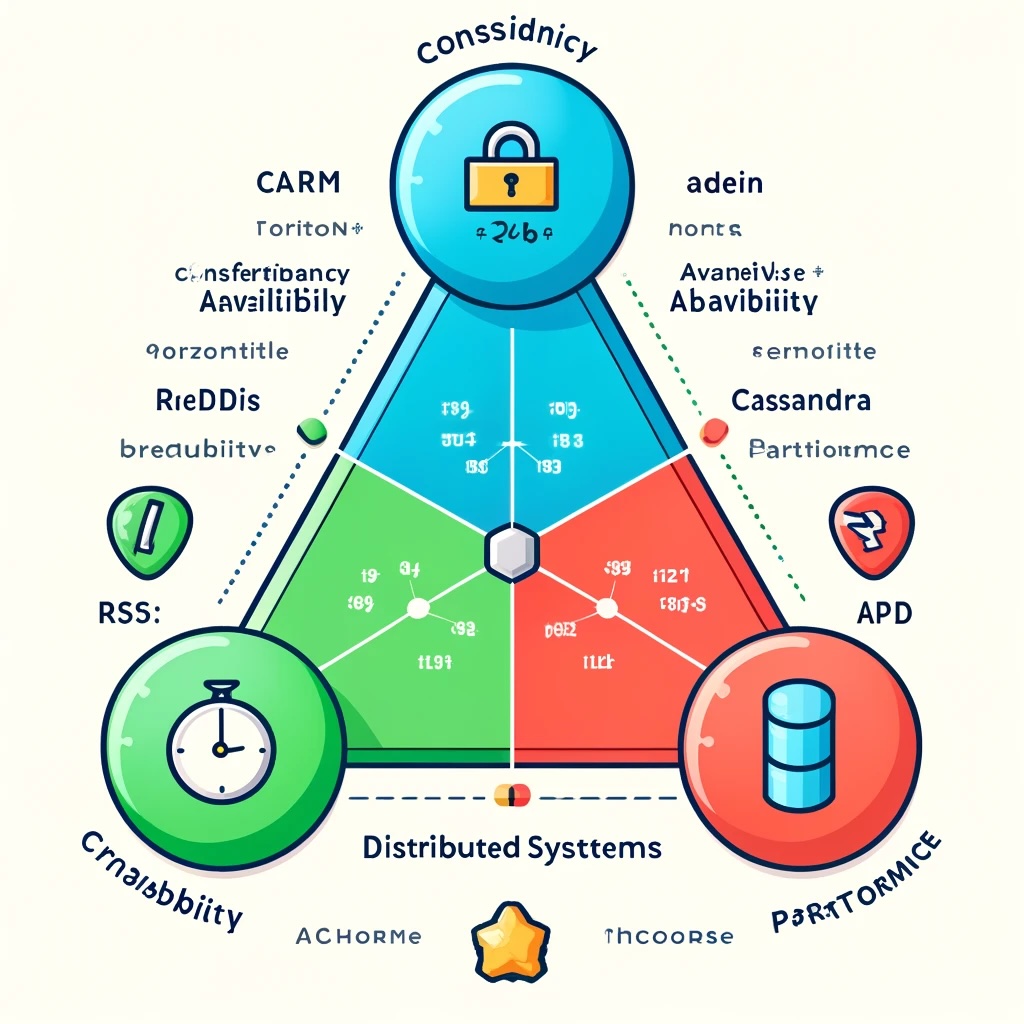CAP Theorem
Understanding the CAP Theorem, insights into Data Systems Design
Understanding the CAP Theorem: Insights into Data Systems Design
In the world of distributed computing, the CAP theorem offers fundamental insights that are crucial for understanding the limitations and potential trade-offs when designing and maintaining distributed systems. Often referred to as Brewer's theorem, named after computer scientist Eric Brewer who formulated it, the CAP theorem asserts that it is impossible for a distributed data store to simultaneously provide more than two out of the following three guarantees: Consistency, Availability, and Partition Tolerance.
What is the CAP Theorem?

The CAP theorem proposes that any distributed system can only guarantee two of the following three characteristics:
- Consistency: Every read receives the most recent write or an error.
- Availability: Every request receives a response, without guarantee that it contains the most recent write.
- Partition Tolerance: The system continues to operate despite an arbitrary number of messages being dropped or delayed by the network between nodes.
In essence, the theorem presents a choice between these three options, underlining the challenges of managing modern distributed systems. Here’s how it breaks down:
-
Consistency and Availability without Partition Tolerance (CA): While a system can ensure data consistency and availability, it becomes vulnerable to network partitions. In real-world scenarios, where network failures occur inevitably, forfeiting partition tolerance can be impractical. Systems designed under this model are typically traditional, non-distributed architectures like relational databases.
-
Consistency and Partition Tolerance without Availability (CP): These systems maintain data consistency and can sustain network partitions, but they might not be always available. Databases that typically fit this model include MongoDB and Redis, where operations might be delayed or unavailable during partitions to ensure consistency and data integrity.
-
Availability and Partition Tolerance without Consistency (AP): These systems are always available and can tolerate network failures, but they might serve outdated data to the user. Systems like Cassandra and CouchDB fit into this category. They are designed to handle massive distributed scale and are ideal where availability is prioritized over immediate data consistency.
Practical Implications of the CAP Theorem
The CAP theorem is not a prescription but rather a framework to identify trade-offs in distributed systems:
-
System Design: When architects design systems, understanding these trade-offs helps in making more informed decisions that align with business needs. For instance, an e-commerce platform might prioritize availability over consistency to ensure that user transactions are never blocked, even if it means occasional order duplication.
-
Fault Tolerance: For systems requiring high fault tolerance, sacrificing consistency for partition tolerance and availability might be necessary. Conversely, financial systems where consistency is paramount may reduce availability to handle partitions effectively.
-
Data Accuracy: In scenarios where data accuracy cannot be compromised, such as banking applications, a CP model might be more appropriate, even at the cost of occasional downtimes.
Evolving Beyond CAP
Modern distributed systems often shift and adjust the boundaries defined by CAP based on dynamic conditions and requirements. Techniques such as eventual consistency provide a middle ground, allowing systems to function as AP under normal operations and switch to CP during partitions, ensuring data consistency once the partition resolves.
Furthermore, extensions and interpretations of CAP, like the PACELC theorem, suggest that more nuanced trade-offs exist, especially when considering the latency of operations in addition to the CAP constraints.
Conclusion
The CAP theorem remains a foundational concept in distributed system design, emphasizing that trade-offs are inevitable in scenarios involving network partitions. By understanding CAP, system designers can better navigate these trade-offs, designing systems that align more closely with specific business requirements and operational contexts. In today's ever-connected world, where system resilience and data integrity are paramount, grasping the implications of the CAP theorem is more relevant than ever.
Links: